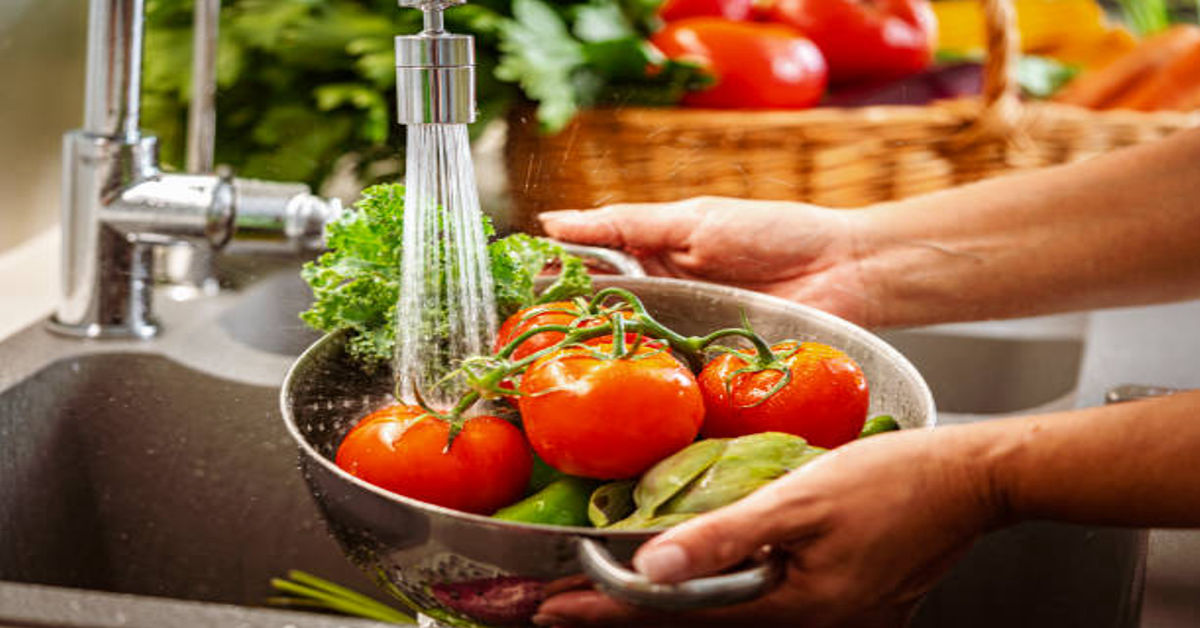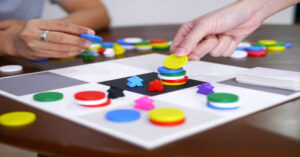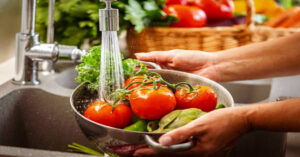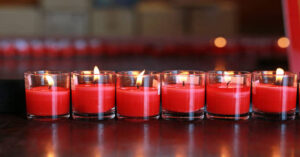A colander is one of the most essential yet often overlooked tools in a kitchen. While it might appear simple at first glance, the functionality, material variation, design differences, and culinary importance of this tool make it a crucial asset in food preparation. Understanding a colander in depth means learning about its origins, purpose, structural differences, manufacturing materials, safety considerations, industry usage, and maintenance needs. This article presents a fully detailed and comprehensive guide on colanders, their history, how they are made, the role they play in homes and commercial kitchens, and how to select the perfect one.
WHAT IS A COLANDER?
A colander is a perforated kitchen utensil used primarily for draining liquids from foods. It typically has a bowl-like shape with numerous small holes that allow water or other fluids to pass through while retaining solid food. The name “colander” has roots in Latin, derived from the word meaning “to sieve” or “strain.” While it resembles a strainer in function, a colander is generally larger, bowl-shaped, and used more commonly for rinsing vegetables, washing fruits, draining pasta, and handling large batches of food.
In modern cooking, the colander represents efficiency. Without this tool, draining food would require more hands, additional utensils, or risky attempts to tilt pots without losing ingredients. Instead, this single utensil simplifies a common cooking process safely and consistently.
HISTORY AND EVOLUTION OF THE COLANDER
Although the exact origin is hard to pinpoint, the concept of draining food has existed for thousands of years. Ancient cooking practices relied on woven baskets made from reeds or natural fibers. These early draining devices were the predecessors of today’s colanders. With the development of metalworking, colanders became more durable and effective tools.
Early colanders in Europe were made from copper or tin, hand-forged with drilled holes. Over the centuries, material advancement led to enamel-coated steel, aluminum, stainless steel, and eventually plastic and silicone options. Each new material introduced benefits such as corrosion resistance, lightweight handling, flexible shapes, and heat resistance.
Today, colanders appear in every home kitchen, restaurant, and culinary institution worldwide. They come in diverse styles and designs suited to different tasks, materials, and preferences.
COMMON USES OF A COLANDER IN THE KITCHEN
A colander is far more versatile than many people realize. While most associate it just with draining pasta, it performs numerous other functions in daily cooking:
- Draining cooked pasta, noodles, or rice
After boiling, hot water needs to be separated quickly while keeping the cooked food intact. A colander handles high temperatures and allows steam and water to drain safely. - Washing and rinsing fruits and vegetables
Produce can be placed in the colander under running water, allowing effective cleaning without holding each item individually. - Draining canned products
Items like beans, canned vegetables, and chickpeas often need to be rinsed to remove excess salt or preservatives. - Draining fried foods after oil cooking
Some colanders made of metal can be used to allow excess oil to drip from fried items. - Steaming vegetables (with heat-resistant colanders)
When placed over boiling water, some colanders can double as steaming baskets. - Drying salads before dressing
Salad spinners include the concept of a colander to shake off excess moisture.
This makes the colander one of the most frequently used tools in home and commercial kitchens.
DIFFERENCE BETWEEN A COLANDER AND A STRAINER
While many use the terms interchangeably, there are meaningful differences:
| Feature | Colander | Strainer |
|---|---|---|
| Shape | Bowl-shaped | Often cone or mesh-shaped |
| Holes | Larger perforations | Finer mesh or small openings |
| Common Use | Draining pasta, rinsing fruits | Straining sauces, removing fine particles |
| Handling | Freestanding, often with base/legs | Usually handheld |
A colander is built for handling larger food items, whereas a strainer is specialized for finer liquids and small particles.
TYPES OF COLANDERS
Colanders come in a wide range of designs. Each type has a specific purpose, durability level, and ease of use.
1. Traditional Bowl Colander
This is the most common type and is often made of stainless steel or plastic. It sits firmly in a sink and holds large quantities of food.
2. Over-the-Sink Colander
An extendable frame allows the colander to sit across the sink, making draining and rinsing hands-free. It prevents the utensil from touching the sink surface, offering increased hygiene.
3. Collapsible Silicone Colander
These are modern, space-saving designs. Ideal for small kitchens, RVs, and travel cooking setups, they fold flat and expand when needed.
4. Footed Colander
This type features small legs or a pedestal base, elevating it from surfaces for improved drainage and airflow.
5. Spaghetti or Pasta Colanders
Some cookware sets come with lids featuring built-in colander holes. However, stand-alone pasta colanders are designed to handle heavy, hot foods and allow fast drainage.
6. Mesh Colander Hybrid
While closer to a strainer, these are large enough to perform colander functions but include finer mesh for catching smaller particles.
MATERIALS USED IN MANUFACTURING COLANDERS
Different materials offer different strengths, cooking suitability, safety advantages, and price variations. Choosing the correct one depends on user needs.
| Material | Advantages | Disadvantages |
| Stainless Steel | Durable, corrosion-resistant, heat safe | Heavier, can dent if thin |
| Plastic | Lightweight, inexpensive, colorful | May warp with heat; lower lifespan |
| Silicone | Heat safe, foldable, non-reactive | Not as rigid; may wear over time |
| Aluminum | Lightweight, conducts heat | Can react with acidic foods without coating |
| Enamel-Coated Steel | Decorative, rust-resistant | Coating can chip over time |
| Copper | Traditional and attractive | Requires regular maintenance and lining |
Stainless steel remains the most common in professional kitchens due to durability and heat tolerance.
DESIGN FEATURES THAT AFFECT PERFORMANCE
A colander may appear simple, but small design details greatly influence usability.
1. HOLE SIZE AND DISTRIBUTION
Small holes retain smaller food particles but may drain more slowly. Larger holes drain faster but risk losing small grains. Even distribution ensures efficient drainage without puddling.
2. HANDLE DESIGN
Handles may be:
- Single long handle
- Dual side grips
- Heat-resistant silicone grips
- Riveted metal handles
Handles improve control when draining heavy hot foods.
3. BASE DESIGN
A flat or footed base determines how well water escapes. Elevated bases allow better drainage.
4. SHAPE
Wide shallow colanders excel at washing produce, while deeper ones are ideal for pasta or rice.
5. WEIGHT
The utensil should be strong enough for durability but not too heavy to handle when filled with food.
INDUSTRIAL AND COMMERCIAL USES OF COLANDERS
In commercial kitchens, a colander supports large-scale food preparation. Restaurants use full-size, high-capacity metal colanders to:
- Rinse bulk vegetables
- Drain pasta for multiple servings
- Cool blanched items rapidly
- Strain stocks before filtration
- Drip-dry fried foods
Some industrial food factories use machine-automated colander systems to rinse, separate, and transport ingredients efficiently.
BENEFITS OF USING A COLANDER IN COOKING
The colander offers numerous advantages:
- Improved hygiene: Food does not contact sink surfaces directly.
- Time-saving: Allows quick large-volume washing and draining.
- Safer food handling: No need to risk pouring heavy hot pans without support.
- Versatile usage: Works with vegetables, grains, pasta, fruits, and more.
- Durable: Long-lasting when chosen with the right material.
HOW TO SELECT THE RIGHT COLANDER
Selecting a colander depends on kitchen needs and lifestyle. Questions to consider:
- Will it primarily handle hot foods like pasta?
- Is kitchen space limited?
- Will it be used daily?
- Is dishwasher compatibility needed?
- Are acidic ingredients being drained?
A good colander should feel sturdy, drain efficiently, and be easy to clean.
COMMON MISTAKES PEOPLE MAKE WITH COLANDERS
Even with its simplicity, users sometimes make errors:
- Using too small a colander for heavy pasta loads
This causes tipping or spillage. - Choosing decorative but impractical models
Some look appealing but have poor hole distribution. - Not cleaning immediately after use
Starch or food particles can dry and clog holes. - Using plastic colanders for boiling oil or extreme heat
This risks melting or warping.
CLEANING AND MAINTENANCE GUIDELINES
Different materials require different care:
Stainless Steel
- Wash with warm soap water
- Polish occasionally
- Dishwasher safe
Plastic
- Avoid abrasive tools
- Keep away from open flames
Silicone
- Dishwasher safe
- Periodically boil to sanitize
Copper or Enamel
- Should be hand washed
- Avoid abrasives to prevent damage
Drying immediately helps prevent mineral spotting and extends lifespan.
SAFETY TIPS WHEN USING A COLANDER
- Always ensure the colander is stable before pouring in boiling liquids.
- Avoid placing plastic colanders directly under extremely hot steam.
- Wear oven mitts when holding metal handles exposed to steam.
INNOVATIONS AND MODERN COLANDER DESIGNS
The basic colander has evolved into advanced versions:
- Snap-on lid strainers that attach directly to pots
- Nested colander sets for multiple portion sizes
- Rotating rinse colanders that spin produce clean
- Electric colander dryers in industry use
These upgrades cater to cooking efficiency and ergonomic comfort.
WHY EVERY KITCHEN SHOULD HAVE AT LEAST ONE COLANDER
From washing produce to draining pasta, making salads, or separating ingredients, a colander is a fundamental tool that saves effort, improves hygiene, and speeds up cooking. It requires no electricity, lasts for years, and makes daily food preparation smoother and safer.
CONCLUSION
A colander may be simple, but it is undeniably indispensable. Whether used for rinsing produce, draining pasta, or preparing food in commercial kitchens, it contributes essential value to the cooking process. With various styles, materials, and innovations available, choosing the right colander depends on intended usage, durability preferences, kitchen space, and personal cooking habits. Proper care ensures it lasts for years, making it one of the most reliable and practical tools in every kitchen.
FAQs
1. Can a colander be used as a steamer?
Yes, metal colanders placed over boiling water can serve as steamers, though they should be heat-resistant and stable.
2. Which material is best for a long-lasting colander?
Stainless steel is generally the most durable, heat-resistant, and professional-grade material.
3. Can plastic colanders be used for draining hot pasta?
They can be, but excessive heat may warp lower-quality plastic. Silicone or stainless steel is safer for high temperatures.
4. How do I stop small ingredients from falling through holes?
Select a colander with smaller perforations or use a mesh hybrid when draining rice, quinoa, or small grains.
5. Are collapsible silicone colanders reliable?
Yes, they are space-saving and functional, though they may not be as rigid as stainless steel models for very heavy loads.









